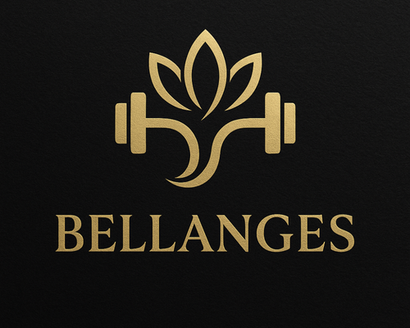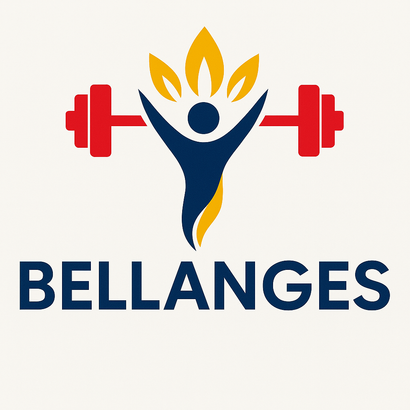Your Cart is Empty
This Plyometric Workout Will Get You Crazy STRONG & FAST
Want explosive power, lightning-fast speed, and jaw-dropping athleticism?
Then you need plyometrics in your training.
In this video, I’m breaking down the most effective plyometric exercises to help skyrocket your strength, speed, and athletic performance.
Stick with me till the end—because the final move I’m going to show you is a complete game-changer.
Let’s get right into it.
Exercise 1: Box Jumps
First up: box jumps.
This powerhouse exercise is incredible for building lower body explosiveness.
It targets your quads, hamstrings, glutes, and calves—training them to produce maximum force in short bursts.
That means higher jumps, faster sprints, and sharper agility.
Box jumps are a must for athletes in sports like basketball, soccer, and football.
Plus, they fine-tune your neuromuscular coordination, helping your body activate muscle fibers more efficiently.
To perform one, stand a few inches from a sturdy box, drop into a quarter squat, then explode up and land softly.
Step down, reset, and go again.
By the way, I’ve put together a full plyometric workout plan to accelerate your progress—we’ll go over it at the end of this video, so stay locked in.
Exercise 2: Clap Push-Ups
Next up, clap push-ups.
Want to build explosive upper body power? This is your go-to.
It demands rapid force from your chest, shoulders, and triceps—and sharpens your reaction time.
This kind of explosive effort activates those fast-twitch muscle fibers, making it ideal for building punching and throwing power.
It also engages your core, boosting overall stability and functional strength.
That’s why fighters and boxers love it—it mimics the explosive strength behind quick punches.
To do it: start in a regular push-up position, lower down, then explode up and clap before landing back in your starting form.
Beginners—start with explosive push-ups without the clap and progress from there.
Fun fact—Mike Tyson did hundreds of these a day. No wonder his punches hit like thunder.
Exercise 3: Jump Rope
Number three: the jump rope.
It’s not just for kids—this is a legit tool for serious athletes.
Jumping rope builds endurance, improves coordination, strengthens calves, and increases agility.
The fast contraction-relaxation cycles train muscular endurance—perfect for sprinting and jumping.
It also boosts your heart’s efficiency, helping improve stamina and burn fat fast.
Fighters, hoopers, and sprinters all rely on it for footwork and movement efficiency.
To do it right, stay tight in your core, bounce on the balls of your feet, and turn the rope with your wrists—not your arms.
Light, quick jumps keep the rhythm going.
Quick trivia: what’s the world record for the longest jump rope session without stopping?
Got your guess?
The answer—33 hours and 20 minutes!
Shoutout to Joey Motsay, the beast who set it in 2009.
Comment if you got it right. Now let’s keep it moving.
Exercise 4: Medicine Ball Throw
Up next, the medicine ball throw.
This is a full-body power move that lights up your posterior chain, shoulders, and core.
It mimics explosive movements needed in sports like Olympic lifting, throwing events, and sprinting.
You’re training your body to transfer force from the lower half to the upper—key for sprinting, jumping, and powerful throws.
It also builds shoulder strength and stability, making it a go-to for athletes in football, baseball, and basketball.
To perform: grip the ball with both hands, drop into a small squat, and explode upward while launching the ball as high as possible.
Use your legs, core, and arms in one fluid, explosive motion.
Ever wondered how QBs throw bombs downfield? This is one of their secrets.
Exercise 5: Squat Jumps
Next up: squat jumps.
These are essential for building strength, speed, and explosive endurance.
You’ll hit the quads, hamstrings, glutes, and calves—key muscles for sprints, jumps, and quick lateral movements.
They also improve ankle and knee stability, which lowers injury risk and boosts overall athletic performance.
Because they demand quick force production, they also enhance reaction time—huge for competitive sports.
Bonus: they crank up your metabolism and improve cardio conditioning.
To do them right: squat down, then explode upward as high as you can.
Land soft, and go straight into the next rep.
Now get ready—the next exercise is used by pro athletes to build serious upper body power.
Exercise 6: Battle Ropes
Enter: battle ropes.
These aren’t just for conditioning—they’re amazing for building upper body endurance and power.
Slamming or whipping the ropes recruits your shoulders, arms, and core while torching your cardiovascular system.
Maintaining that wave motion demands rapid contractions, which builds muscular endurance and explosive strength.
Perfect for fighters, football players, and anyone needing serious upper-body firepower.
Bonus—they boost grip strength, which helps with lifts, climbs, and more.
Battle ropes also sharpen coordination, since both arms must stay in rhythm.
Form tip: keep your core tight, stay light on your feet, and generate force from your whole body—not just your arms.
Plyometric Workout Plan
Now, let’s talk about that plyometric workout plan I mentioned.
For best results, train four days a week.
Day 1:
-
Box Jumps: 4 sets of 8 reps
-
Clap Push-Ups: 4 sets of 10 reps
-
Jump Rope: 3 rounds, 1-minute bursts
Day 2:
-
Medicine Ball Throws: 4 sets of 6 reps
-
Squat Jumps: 4 sets of 12 reps
-
Battle Ropes: 3 rounds of 30-second max-effort intervals
Day 3:
-
Squat Jumps: 4 sets of 12
-
Clap Push-Ups: 4 sets of 12 (wider grip for challenge)
-
Jump Rope: 4 rounds of 45-second bursts
Day 4:
-
Box Jumps: 5 sets of 6 (focus on max height)
-
Medicine Ball Throws: 4 sets of 8
-
Battle Ropes: 4 rounds of 25-second all-out waves
On rest days, keep things active with mobility drills, stretching, and core work to stay sharp and prevent injuries.
Plyometrics are powerful—but what if I told you there’s a way to build serious strength and stability… without even moving?
Sounds crazy, right?
Click the video on screen right now to see what I’m talking about.




